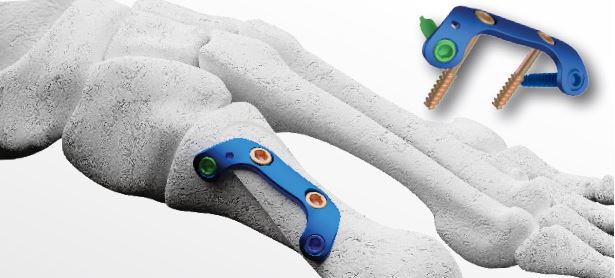The Centers for Advanced Orthopaedics is redefining the way musculoskeletal care is delivered across the region with locations throughout Maryland, DC, Virginia and Pennsylvania.
Immediate Weight Bearing After Hallux Valgus Correction

Immediate Weight Bearing After Hallux Valgus Correction Using Locking Plate Fixation of the Ludloff Osteotomy: A Retrospective Review.
1 Orthopedic Foot & Ankle Center Division, Centers for Advanced Orthopaedics, Falls Church, Virginia (SKN).
2 Department of Orthopaedic Surgery, MedStar Georgetown University, Washington, DC (JJM).
3 VCU Department of Orthopaedic Surgery, Charlottesville, Virginia (MC).
Abstract
BACKGROUND:
A Ludloff osteotomy is a common procedure used to correct hallux valgus deformities. Traditionally, the osteotomy is stabilized with screws only, thus requiring the patient to be non-weight bearing until healed. There have been no outcome studies analyzing immediate weight bearing after Ludloff osteotomy for hallux valgus.
METHODS:
Of the 350 patients (390 feet) who underwent a Ludloff osteotomy fixed with a locking plate and prescribed an immediate weight-bearing postoperative protocol, 288 patients (326 feet) were included in the analysis. Average radiographic follow-up was 8 months, and hallux-valgus angle (HVA), intermetatarsal angle (IMA), and any hardware failures or hypertrophic callus formation were recorded. The Foot Function Index (FFI) was assessed in 103 patients at an average of 44 months postoperatively.
RESULTS:
Average IMA and HVA correction were 7.6° and 21.6°, respectively (P < .0001). Loss of HVA and IMA correction of 4.6° and 2.3°, respectively, were noted between the initial postoperative films and final weight-bearing films. The average FFI score calculated for the 103 respondents was 10.4 out of a possible 100, indicating relatively low pain and disability. Complication rates were consistent with most other published postoperative protocols, with the most commonly seen being superficial infection (4.9%) and symptomatic hardware (4.6%).
CONCLUSION:
An immediate weight-bearing protocol for Ludloff osteotomies fixed with locking plates results in recurrence rates that are similar to those found with other protocols. Patient function is quite high and pain low following this protocol. The most commonly observed complications were superficial infection and symptomatic hardware requiring removal.
LEVELS OF EVIDENCE:
Level IV.